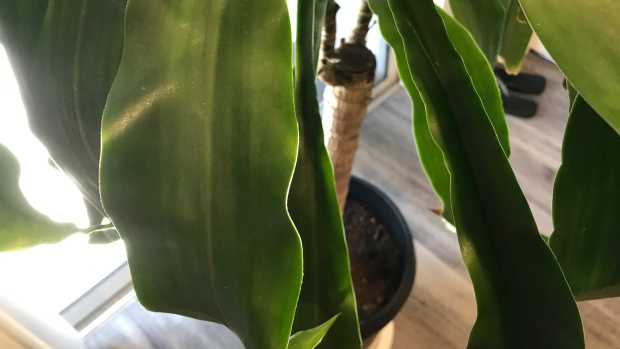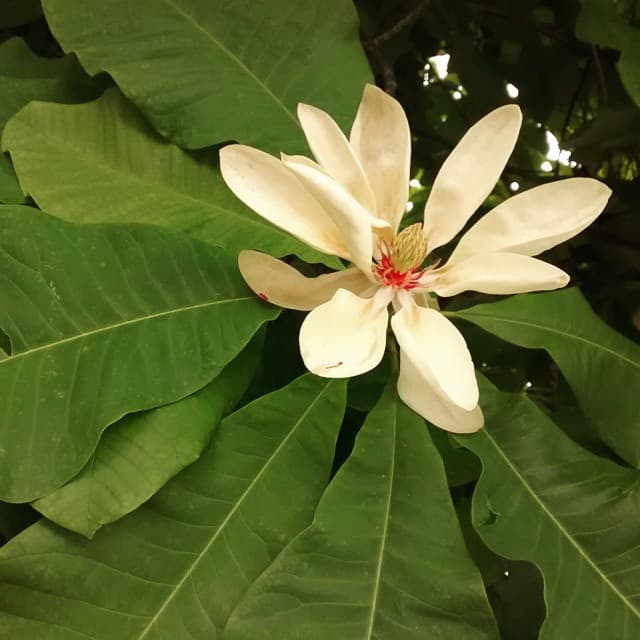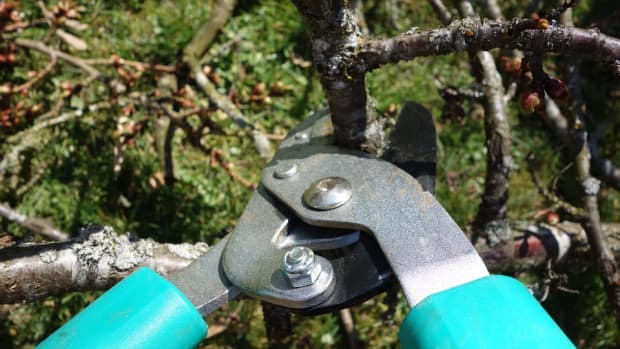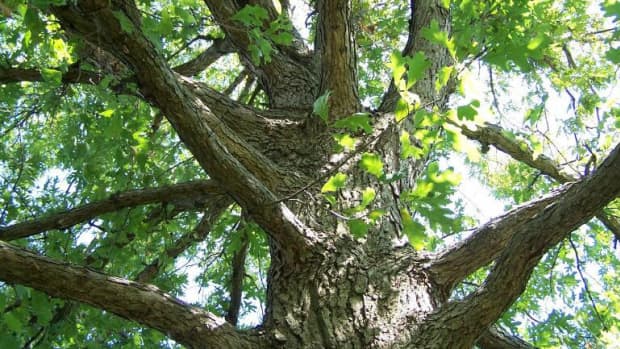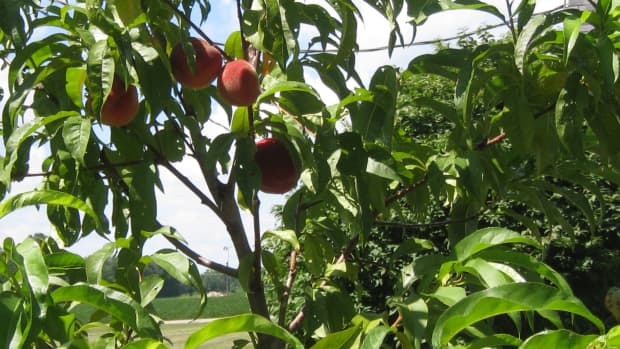Ohio’s Blooming Magnolia Trees

Learn all about Ohio magnolias, including native species, where they grow, and how they differ from other kinds of trees.
Everything You Need to Know About Ohio Magnolias
Magnolias aren't just a symbol of America’s southern states; deciduous, evergreen, and semi-evergreen magnolia trees also grow throughout the country. In Ohio, our ever-changing spring weather determines when the most popular magnolia tree species will start to bloom.
In This Article
- Native Magnolias
- Cucumber Tree
- Umbrella Magnolia
- Bigleaf Magnolia
- Tulip Tree Magnolia
- Recommended Magnolia Trees for Ohio
- Frost Damage to Magnolia Trees and Shrubs
Native Magnolias
There are four native magnolia (Magnoliaceae) species in Ohio, with each having its unique characteristics. Depending on the weather, these flowering trees will bloom in early to late spring (March to June). However, when winter months yield unseasonably warm temperatures, magnolia tree flowers may start budding too early. Inevitably, falling temperatures and late frosts will damage the buds, keeping them from emerging into beautiful flowers.
Ohio’s U.S. Department of Agriculture Plant Hardiness Zones are 5b, 6a, and 6b. Suitable magnolia species are:
- Cucumber Tree
- Umbrella
- Tulip Tree, and
- Bigleaf.
There are a variety of cultivars for each species.
Cucumber Tree
The Cucumber Tree (Magnolia acuminata) is one of the hardiest and most common of Ohio’s magnolia species. Its leaves are about 10 inches long and 5 inches wide. When growing in slightly acidic soil, these trees will reach up to 70 feet high and span 30 feet wide; they typically bloom in late May with greenish yellow bell-shaped flowers.
Where Are They Found?
Cucumber magnolia trees sprout in forests and woodlands around the state; some grow in Central Ohio counties, but they mostly populate northern and eastern thickets. Transplanting cucumber tree magnolias is best done in early spring. Seedlings are often used as root stock for growing many ornamental cultivars.
Characteristics
Cucumber tree leaves are ovate, large, alternating, and medium green; they turn chartreuse or light brown in the fall. The flower is several inches long. In the summer, cucumber tree magnolias sprout young fruits that do resemble tiny cucumbers. Mid-summer buds are silvery-green and fuzzy.
Umbrella Magnolia
The umbrella magnolia is one of the smaller species, Umbrella magnolia (Magnolia x tripetala) grows up to 30 feet high with clustering leaves that are about 18 to 25 inches long.
Where Are They Found?
Seen mainly in southern counties (Jackson, Scioto, Vinton), umbrella magnolias are an endangered species in Ohio.
Characteristics
The blooms have six or nine yellow-white petals that sprout in late May; they are about 6 to 12 inches long.
Recommended
Bigleaf Magnolia
Suitable for Ohio’s USDA plant hardiness zones 5 and 6, the bigleaf magnolia (Magnolia x macrophylla) is a rare deciduous species with leaves that grow from 12 to 36 inches long.
Characteristics
This magnolia tree’s ivory flowers have six petals; they are 8 to 10 inches across. Their average height is 30 to 40 feet.
Where Are They Found?
Depending on the environment, bigleaf magnolia trees can grow to nearly 60 feet tall in full sun or partial shade. Trees may suffer ice and wind damage, especially when buds emerge before the final frost of spring.
Tulip Tree Magnolia
Tulip tree magnolias (Liriodendron x tulipifer) are most notable for their yellow and greenish foliage and colorful tulip-like flowers.
Where Are They Found?
Growing in Ohio (and other areas of USDA zones 4 through 9), tulip tree leaves emerge in spring and bring flowers by the middle of June. They thrive in damp woodlands, forests, and water-draining downhill slopes.
Characteristics
Tulip trees may grow to more than 100 feet high and four feet around.
Recommended Magnolia Trees for Ohio
The USDA Plant Hardiness Zones are established by combining the lowest average temperatures over a specific time period. In Ohio, the zones are 5b to 6b—between minus 15 degrees Fahrenheit and zero. Some magnolia tree cultivars suitable for Ohio include:
- Magnolia virginiana ‘Sweet Bay’: leaves are thin and green with white flowers that bloom in May or June. The tree grows from 15 to 30 feet tall and wide. Varieties of ‘Australis’ and ‘Jim Wilson Moonglow’ are popular Sweet Bay magnolias.
- Magnolia soulangeana ‘Saucer Magnolia’: growing up to 20 feet tall and wide, the flowers often bloom in March (and may be damaged in extremely cold weather). ‘Alexandrina’ and ‘Lennei’ are recommended for zone 6.
- Magnolia grandiflora ‘Brackens Brown Beauty’: (Southern Magnolia); evergreen with large dark green foliage and perfumed white flowers. Trees grow to about 30 feet tall in direct or filtered sunlight. Blooms in May or June.
- Magnolia stellate ‘Star Magnolia’: a small tree—growing about 15 feet tall—with white flowers. Blooms in early spring. ‘Royal Star’ and ‘Waterlily’ are cultivars that grow well in zones 5b to 6b.
Consult your local garden store, greenhouse, or nursery for advice on the magnolia cultivars (and colors) most suitable for your yard or landscape.
Frost Damage to Magnolia Trees and Shrubs
In Ohio, we often get late spring frosts; no surprise there! Temperatures drop when the sky is clear because there are no clouds to keep heat close to the earth. Frost protection strategies may include irrigation or wind turbines, but these methods are meant for large commercial operations; they are not practical for residential yards and landscapes.
One simple way to protect trees and shrubs from damaging frost is to cover them with light sheets or plastic cloths, if it can be done. Smaller trees and bushes are easy to manage, however, larger magnolias (and other trees) in your landscape can be damaged; there is very little we can do about it. Remove the sheets when the sun comes up because direct sunlight over heat covers can lead to tree and leaf damage.
This content is accurate and true to the best of the author’s knowledge and is not meant to substitute for formal and individualized advice from a qualified professional.
Questions & Answers
Question: I live in Ohio. My magnolia tree has scale, and has been treated several times with Neem oil. The tree is still heavily infested. Do you have any suggestions?
Answer: Scale insects that suck sap from the host tree can cause damage, if they remove large amounts, but otherwise, magnolias tolerate small infestations. One thing to do; keep the tree healthy by pruning dead branches, watering, and mulching. Depending on how widespread the scale infestation on your magnolia is, you can manage it without chemicals. Neem oil really can be effective, but the process for killing off insects is very slow. It is a product that messes with insects' brainwaves, causing them to stop eating and mating -- eventually. You might find that it will be very effective in the long run, but it is not a chemical insecticide that works overnight. Scale insects are vulnerable when they are in the "crawler" stage -- insecticidal soaps and horticultural oils typically do work on them --- but not so much as adults. Adults die off after reproducing (you can remove their bodies by hand). I cannot make a particular brand recommendation here, unfortunately, but you can check with your local nursery or garden store for insecticidal soaps and organic products that will help destroy scale in its infancy.
Question: Where can I find seedlings of the pink and white hued Magnolia in front of the White House?
Answer: Southern magnolia trees are noted to live up to 120 years in the right climatic environments. The magnolia tree at the White House is called a Jackson Magnolia; Andrew Jackson planted it in memory of his wife, who had died within days of his election (1828). The story is that Rachel Jackson wanted to plant a sprig of a tree growing on their Tennessee farm. In 2017, arborists recommended the removal of the nearly 200-year-old dying tree; saying it would have been removed a long time ago if it was not "historic." The upside is that groundskeepers at the White House kept offshoots of the tree, which are growing in a greenhouse. The "baby" is to be planted at the White House.
To the best of my knowledge, seedlings of the original Jackson Magnolia are not available to the public. You might inquire with your local congressional representative's office.
Question: How do I determine hardiness zone?
Answer: Most of Ohio is in USDA plant hardiness zone 6a, where average cold hardy temperatures are minus 10 to minus 5. Some parts of Southern Ohio are in USDA zone 6b, where the cold hardy temps are five below to zero (degrees Fahrenheit). There are a couple of areas around the state at 5b (minus 15 to minus 10). The United States Department of Agriculture's Plant Hardiness Zones map is available on its website, through this page: http://planthardiness.ars.usda.gov/PHZMWeb/
© 2018 Teri Silver
Comments
Teri Silver (author) from The Buckeye State on March 15, 2018:
Thank you!
Angel Guzman from Joliet, Illinois on March 15, 2018:
An article like this makes you appreciate nature and want to take a walk around beauty. Good read and great pictures.




